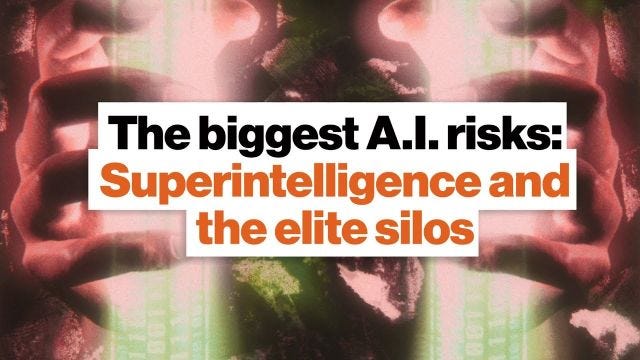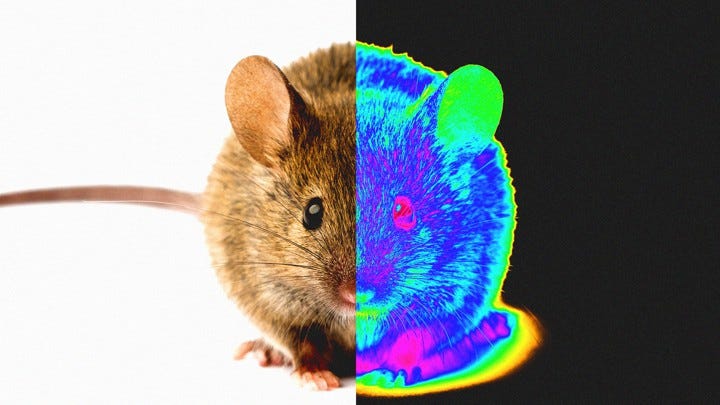Issue #196 - the story of blood transfusing startup promising to stop ageing; one robot learned how to do backflips while another conquered the stairs
View this email in your browser
Featured this week - the story of blood transfusing startup promising to stop ageing; one robot learned how to do backflips while another conquered the stairs; mice with infrared vision; the biggest AI risks; and more!
Before we jump into this week's issue, let me share with you what have I found on the streets of London.

Maybe the robots would be better. What do you think? Would robots make better politicians than humans?
MORE THAN A HUMAN
The Bloody Tale of Ambrosia, the Startup That Wants to Slow Aging

Ambrosia was promising something takes straight from a grim fairytale - for $8,000 they would inject older people with fresh blood from young people to slow down ageing. The CEO of the company went even further claiming the treatment “comes pretty close” to immortality. Then FDA stepped in issuing a warning saying the treatment’s benefits are unproven and that the practice could be harmful. Soon after that, Ambrosia ceased all treatments. The article goes in depth into the story of the company and technology and the controversy around it.
How I Became a Robot in London—From 5,000 Miles Away
Can you be "here" and "there" at the same time? Thanks to telerobotics, you can. This guy experience that. He was sitting in San Francisco with a haptic glove on his hand translating his hand's movement to a robotic arm located in London. The robotic arm was equipped with touch sensors that were then fed back into the haptic glove. In other words, this guy was feeling and interacting with objects located almost 9000km (5000 miles) away from him.
ARTIFICIAL INTELLIGENCE
► The biggest AI risks: Superintelligence and the elite silos

Ben Goertzel talks about the two biggest risks in AI. The long-term risk is the Superintelligence and how to make sure we can avoid the Skynet scenario. The second risk is short-term - it is about the concentration of AI expertise, data and power in the hands of few corporations and governments.
Google Launches Ai Platform That Looks Remarkably Like A Raspberry Pi
Ahead of TensorFlow Dev Summit, Google released Coral Dev Board. It looks like Raspberry Pi but for AI. It was designed to help quickly prototype on-device machine learning products with hardware specifically designed for machine learning. The board will cost $149.
Should Robots Have a License to Kill?
Christopher Intagliata from Scientific American asked AI experts and ethicists what they think about killer robots and how should these weapons be regulated, like forbidding systems that decide to strike without human authorisation.
Greek Myths Have Some Scary Ideas About Robots And AI
Adrienne Mayor from Stanford University sees the Greek myths of Talos and Pandora as a cautionary tale about AI and robotics. “Not one of those myths has a good ending once the artificial beings are sent to Earth. It’s almost as if the myths say that it’s great to have these artificial things up in heaven used by the gods. But once they interact with humans, we get chaos and destruction”, Mayor says.
ROBOTICS
► Backflipping MIT Mini Cheetah

Cheetah, a four-legged robot from MIT, has unlocked the power of backflips. The video not only showcases the robots acrobatic skills but also shows how dexterous the robot is and how good it is at keeping balance. Warning: the video also contains scenes of humans kicking a robot.
The lonely death of Jibo, the social robot
Jibos all around the world are announcing the imminent shutdown of its servers, noting that its interactions will soon be limited. Then they say thank, ask to say "hello" to future robots, perform a dance and wait for the servers to shut down. Jibo showed how hard is to build a successful home assistant, even with good VC backing and successful Kickstarter campaign.
Cassie: Dynamic Planning on Stairs
Researchers from Agility Robotics shared how Cassie, a bipedal robotic ostrich, learned a new trick - walking up the stairs. It's impressive how natural the motion of the robot is.

Engineers at Festo have built a soft robotic hand that is quite close to human hand in terms of dexterity.
BIOTECHNOLOGY
An Ingenious Injection Can Create Infrared Vision

Researchers in China have injected the eyes of mice with nanoparticles that were designed to stick to the light-detecting cells in the rodents’ retinas, giving them the ability to see in infrared. Researchers are already speculating about applying the same treatment to humans.
Thank you for subscribing,
Conrad Gray (@conradthegray)
If you have any questions or suggestions, just reply to this email or tweet at @hplusweekly. I'd like to hear what do you think about H+ Weekly.
Follow H+ Weekly!



